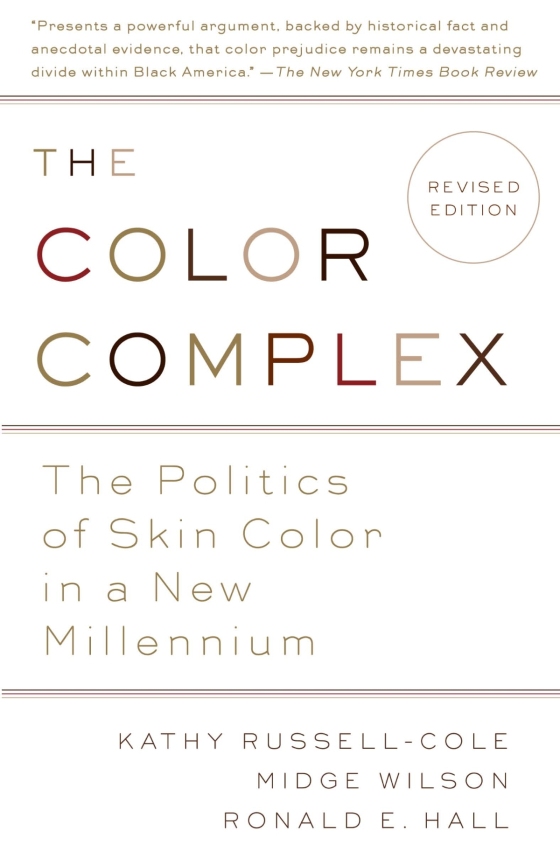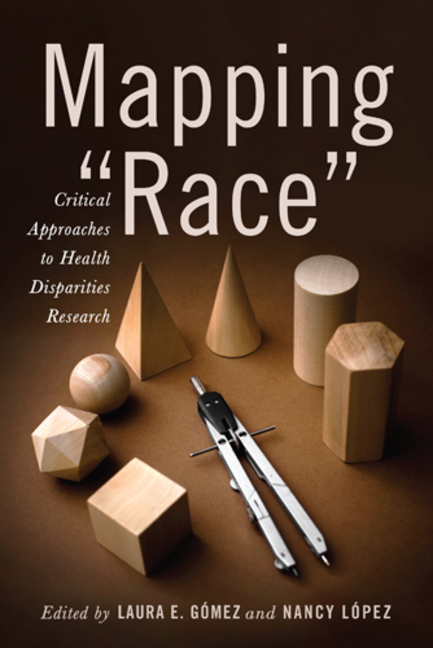The Color Complex: The Politics of Skin Color in a New Millennium (revised)
Random House
2013-01-08
304 pages
Paperback ISBN: 978-0-307-74423-4
Kathy Russell-Cole, Vice President of Sales
Omar Supplies Inc.
Midge Wilson, Associate Dean; Professor of Women’s and Gender Studies
DePaul University
Ronald E. Hall, Professor of Social Work
Michigan State University

A provocative exploration of how Western standards of beauty are influencing cultures across the globe and impacting personal, professional, romantic and familial relationships. Processes like skin lightening in India, hair smoothing in Black America, eyelid reconstruction in China, and plastic surgery worldwide continue to rise in popularity for men and women facing discrimination from both within and outside of their own increasingly fluid ethnic groups. Now including a wealth of new information since the first edition of The Color Complex over two decades ago, the authors, through a historical and sociological lens, have measured the impact of recent pop culture events effecting race relations to determine whether colorism has gotten better or worse over time.
Contents
- Introduction
- Chapter 1: The Emergence of Modern Colorism in the Americas
- Chapter 2: The Global Rise of Colorism
- Chapter 3: The Tiers of Color Prejudice in America
- Chapter 4: The Color of Identity
- Chapter 5: Hair Stories: Politics of the Straight and Nappy
- Chapter 6: Families and Friends: Drawing the Color Lines
- Chapter 7: The Match Game: Colorism and Courtship
- Chapter 8: The (In)Justice of Color: Politics. Policies, and Perceptions
- Chapter 9: The Narrative of Skin Color: Stories in Black and Light
- Chapter 10: #TeamLightskinned: Color and the Media
- Sources
- Acknowledgments
- Index
The Emergence of Modern Colorism in the Americas
We begin in Europe in the late 1400s, when seafaring countries such as England, Spain, and Portugal were financing merchant voyages to find new trade routes to the Far East. The men returned instead with exciting tales of faraway places that were rich with gold, spices, and silks. The very notion that there existed unknown lands beyond the horizon set off a frenzy of empire building on the part of many European nations. This would later be known as the Age of Discovery, and it lasted well into the seventeenth century. After Christopher Columbus reached what he mistakenly believed were the Indies, and it was realized that vast new lands were available for plunder and colonization, European nations began financing more ship captains for even more expeditions with orders to stake claim to as many territories as they could find. It mattered little to the Europeans if indigenous peoples already were living in these “discovered” places. Europeans believed they were the superior race. As such, they saw it as their Christian duty to tame the “savage” natives and bring them civilization, a self-serving rationale that would persist for centuries—Rudyard Kipling would call it “the White man’s burden” as late as 1899.
During the early 1500s, the islands of the Caribbean—or “West Indies,” as they were mistakenly named by Columbus—were popular destinations for Portuguese and Spanish explorers, and other areas of Central and South America soon followed. While the hoped-for gold rarely materialized, it was recognized that the warm climates and rich soil in these new lands had the potential for growing cash crops like sugar and coffee. The crops were labor intensive, however, and for them to be profitable, a source of cheap labor was needed. At first, local indigenous people were captured and forced to work in the colonists’ fields, but there were not enough of them. Some White indentured servants from Europe ventured over, but again, not enough. The Portuguese, who already had explored the east coast of Africa, found the solution by bringing over the first slaves to the New World. This nation would continue to be the largest importer of slaves during the era of Atlantic slave trading.
African slaves poured in to work in the Americas during the seventeenth and eighteenth centuries. Throughout the Caribbean, the British, French, and Dutch had also claimed islands of their own, and they, too, needed slaves to work the sugar plantations. Conditions were ideal for race mixing to take place. Large numbers of individuals from different racial backgrounds were living and working side by side, and doing so under the rule of White plantation owners who were greatly outnumbered. In fact, it has been estimated that throughout the Caribbean, there was an average ratio of one White to ten Blacks and/or mulattoes, and in some of the most remote rural areas there could be as many as fifty slaves and/or mulattoes for every one White male. Finally, there was a significant gender imbalance. During the early years of slave trading, far more African males, with their greater upper-body strength (relative to that of females), were brought to the New World to clear the fields, but females were valued as well, and albeit in smaller numbers, they came too. Predictably, under the extreme conditions in many of these settlement outposts, the White men in charge raped the women who worked for them. But, to be fair, we should note that many romantic relationships and successful unions also came into existence during this time.
Racially mixed individuals, called “mulattoes” (a term considered derogatory by many today), began to make up significant segments of the population throughout Central and South America. They were people of every conceivable variety: those of mixed European and African blood, those of mixed European and indigenous blood, those of mixed African and indigenous blood, and subsequently every combination and permutation created by the mixed-race offspring of the first unions…
Read Chapter 1 here.

